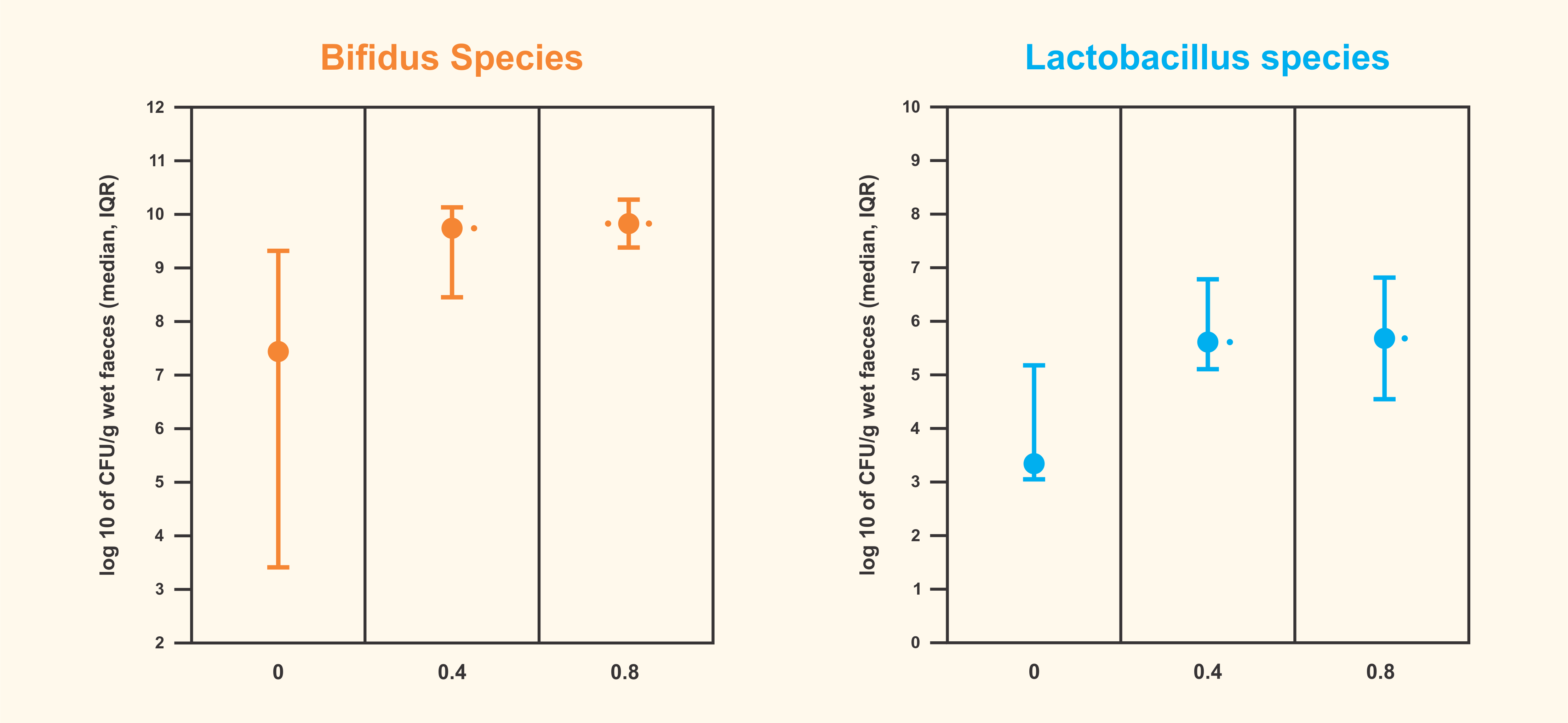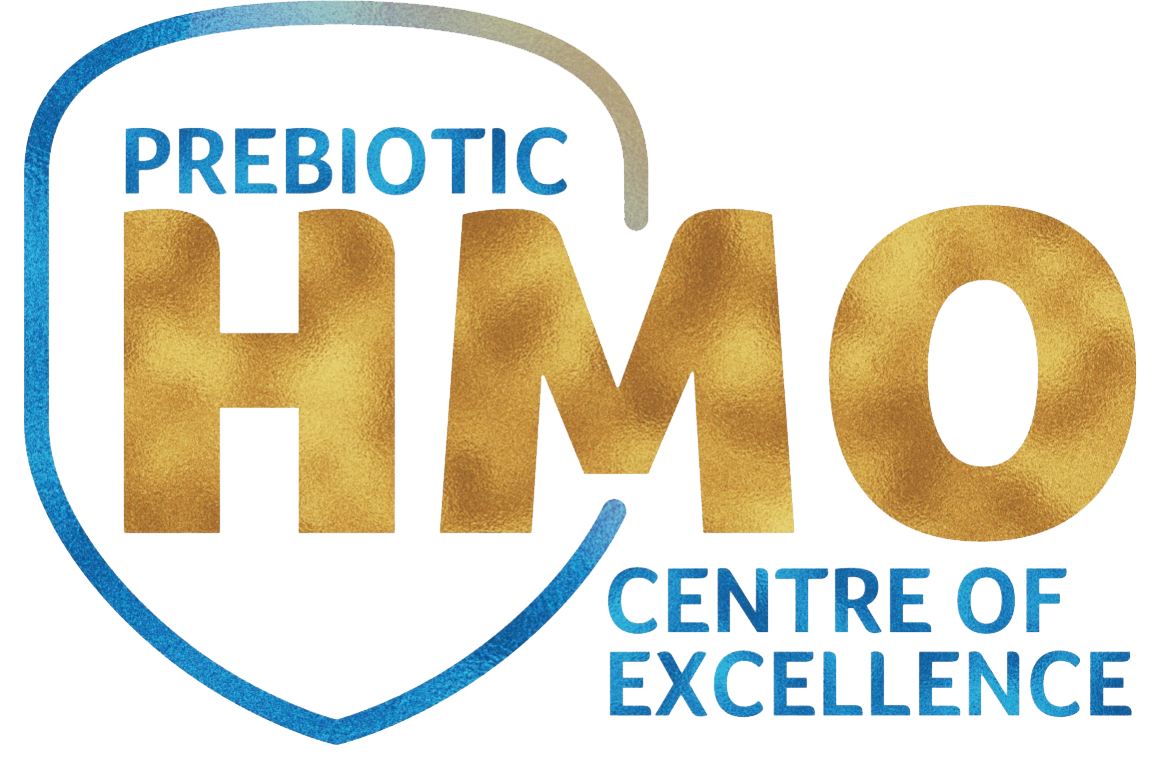Bifidogenic Effects of Galacto and Fructo-oligosaccharides are dose-related
Introduction
Bifidobacteria and Lactobacilli are the predominant intestinal microflora present in breast-fed infants, which helps create a beneficial environment in the intestine thereby developing a strong immune system. Oligosaccharides, third major component of human milk possesses a bifidogenic effect and are thus known as a “bifidogenic” factor of human milk.
Human milk oligosaccharides (HMOs) stimulate the growth of Bifidobacteria and Lactobacilli in the intestine. Research have shown that oligosaccharides found in human milk are resistant to enzymatic digestion in the upper gastrointestinal tract. Many studies have signified the prebiotic effect of short chain galacto-oligosaccharide (scGOS) and long chain fructo-oligosaccharide (lcFOS), which closely mimics the HMOs present in human milk, stimulating the growth of Bifidobacteria.
Aim
To investigate whether the mixture of scGOS and lcFOS exhibit a bifidogenic effect in term infants and whether this effect is dose dependent.
Study Design
Randomised, placebo-controlled trial consisting of 90 term infants assigned to one of the 3 feeding groups.

Infants in all the three groups were fed their respective feeds for 28 days.
Primary Assessed Parameters
- Fecal microbiological analysis to determine bifidobacteria and lactobacillus count.
- Stool pH, consistency and frequency were recorded.
Secondary Assessed Parameters
- Fecal analysis for Bacteroides, Clostridium species, Escherichia coli, Enterobacter, Citrobacter, Proteus, Klebsiella, and Candida.
- Growth parameters - weight and length.
Results and Discussion
Primary Outcome
- Effect on fecal microbiota composition: Fecal bifidobacteria and lactobacilli count increased in both test groups 1 & 2, whereas the count remained constant in the placebo group. Fecal Bifidobacteria count was comparatively higher in TG2, than in TG1 (p < 0.01) (figure:1).

Figure 1. Influence on the counts of Bifidobacteria and Lactobacilli of various oligosaccharide supplementations to infant formulas after a 28-day feeding period (IQR=interquartile range).
- Effect on stool frequency and consistency: At the end of the intervention period of 28 days, stool frequency increased, stool consistency changed to softer stools (figure 2) and pH decreased in TG2 (p < 0.05).

Figure 2. Influence on stool frequency and consistency of various oligosaccharide supplementations to infant formulas after a 28-day feeding period (IQR=interquartile range).
Secondary Outcome
- No positive cultures for Bacteroides, Clostridium species, Escherichia coli, Enterobacter, Citrobacter, Proteus, Klebsiella, and Candida were reported.
- No difference was seen in weight gain and length among the groups.
Conclusion
Supplementation of short chain galacto- and long chain fructo-oligosaccharides increases fecal Bifidobacteria and Lactobacilli count. This effect is dose dependent i.e., a higher supplementation of oligosaccharides indicates more pronounced effects like - influencing the stool frequency and consistency.
Reference
G Moro, I Minoli, M Mosca, S Fanaro, J Jelinek, B Stahl, G Boehm. Dosage-related bifidogenic effects of galacto- and fructooligosaccharides in formula-fed term infants. Journal of pediatric gastroenterology and nutrition. 2002 Mar;34(3):291-5.

